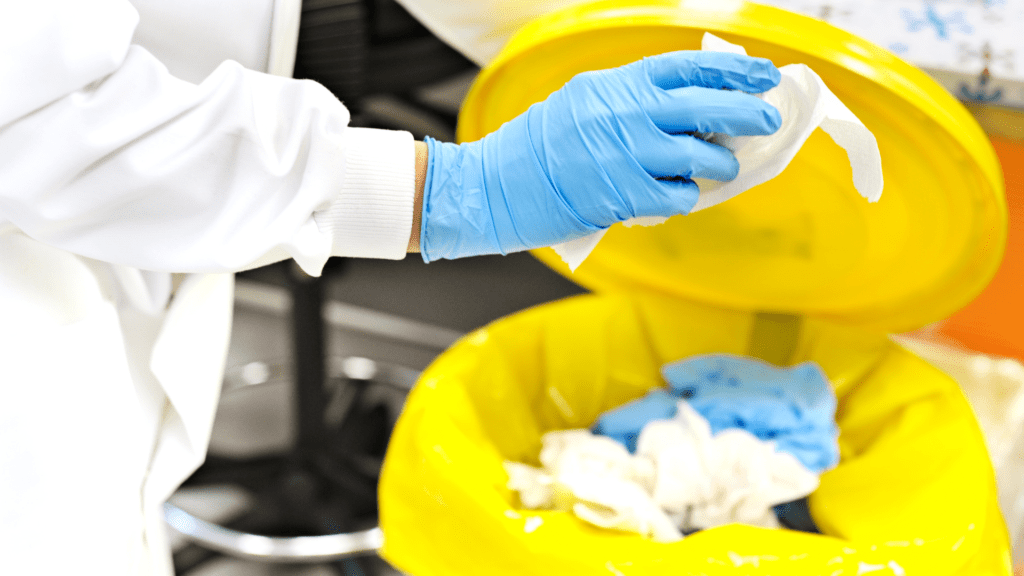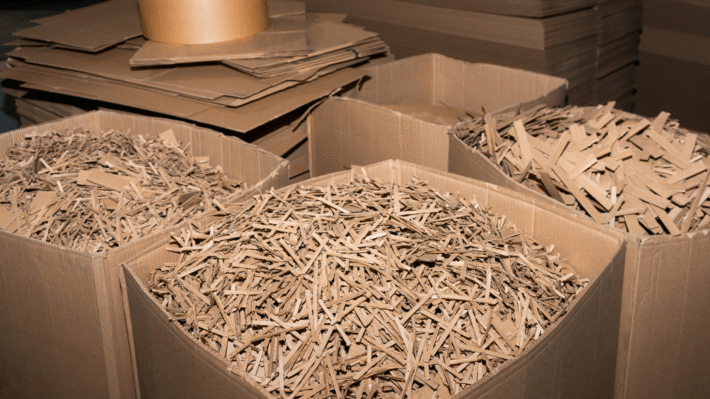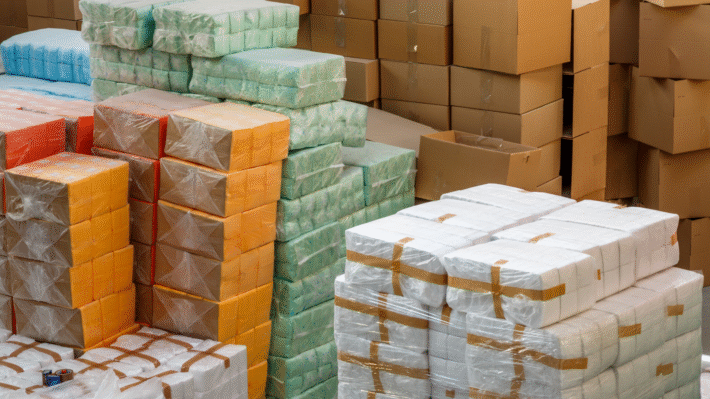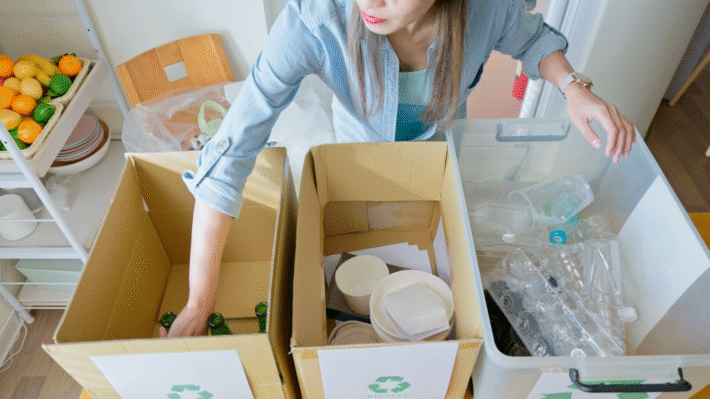Circularity in Hazardous Chemical Disposal: Minimizing Waste & Enhancing Reuse

Creating circularity in the hazardous chemical disposal supply chain is a game-changer for our planet’s health. With global chemical waste on the rise, reducing toxic waste and promoting safe reuse is more critical than ever. By focusing on resource recovery, we can turn potential pollutants into valuable assets.
Understanding how to manage these hazardous chemicals can seem challenging, but with the right tools and knowledge, it becomes an exciting opportunity. Imagine minimizing toxic waste through sustainable design and smart prevention strategies! With innovative approaches like green chemistry, we can transform waste into something useful and beneficial.
From recycling to collaboration networks, the pathway to a more sustainable future is filled with possibilities. Let’s dive into how circular supply chains can revolutionize hazardous chemical disposal, ensuring a greener, safer world for everyone.
Understanding Hazardous Chemical Disposal
Creating a circular supply chain for hazardous chemicals is a big task. To tackle it, we first need to comprehend what we’re dealing with. Let’s dive into the types of hazardous chemicals, look into various disposal practices, and understand the challenges in disposal.
Types of Hazardous Chemicals
Toxic Substances
Toxic substances can harm living creatures and the environment. These are chemicals like lead or mercury. If they enter our air, water, or even the soil, they can cause significant damage. They need special handling to ensure they don’t pose a threat to anyone or anything.
Flammable Materials
Flammable materials ignite easily, and this is dangerous. They can cause fires or explosions. Gasoline and alcohol are examples you’d recognize. Their disposal must be carefully managed to prevent any sparks or flames.
Corrosive Chemicals
Corrosive chemicals can eat through materials like metal or even skin. They include acids and bases. When these get into the wrong places, they can cause severe damage, making safe and proper disposal incredibly important.
Disposal Practices
Next, let’s look at the ways we dispose of these hazardous chemicals. These disposal practices need to ensure safety and reduce waste.
Landfilling Techniques
Putting hazardous waste into landfills is common, but it needs to be done correctly. Special landfills line their pits to prevent chemicals from leaking into the ground. This method must keep the environment and surrounding areas safe from contamination.
Incineration Methods
Incinerating, or burning, hazardous waste is another method. High temperatures can destroy dangerous chemicals. But, it’s essential to control what’s released into the air. We must filter emissions to protect the air quality.
Chemical Treatment Processes
Chemical treatment processes involve using other chemicals to neutralize the hazardous ones. For instance, mixing certain acids with bases can make them harmless. It’s like using a magic potion to turn harmful ingredients into safe ones.
Challenges in Disposal
The road to proper disposal isn’t smooth. There are challenges we must overcome to handle these chemicals safely.
Meeting Standards
First, all disposal methods must meet specific standards. Rules and guidelines by bodies like the EPA or international laws ensure every process is safe for people and the environment. Keeping up with these standards is crucial.
Technological Limitations
Technology is ever-evolving, but sometimes it can fall short. We often need new techniques or machines to handle particularly tricky chemicals. This limitation can slow down the safe disposal process.
Economic Constraints
Lastly, there’s the money factor. Safe disposal and recycling practices can be costly. Companies and nations need dedicated resources to ensure no corners are cut in disposal, keeping all steps both affordable and effective.
Understanding the landscape of hazardous chemical disposal is the first step. By recognizing these types, practices, and challenges, we’re better equipped to create solutions that minimize negative impacts on our world.
Principles of Circular Economy
Welcome to the world of the Circular Economy! It’s a place where waste becomes a thing of the past. Here’s how it all works with something called the Three R’s: Reduce, Reuse, and Recycle.
The Three R’s: Reduce, Reuse, Recycle
Reducing Waste Generation
Let’s start with Reducing Waste Generation. Imagine you are on a mission to make the world cleaner! The best way to do that is by producing less waste in the first place. By using fewer resources and choosing products that last longer, we cut down on trash. Think of it as a way to give our planet a big hug by using what we have wisely!
Safe Reuse of Materials
Now, onto Safe Reuse of Materials. Instead of throwing things away, how about a new way of thinking? Reusing materials safely means finding clever ways to use things more than once. For example, turning old jars into containers for your favorite snacks, or using an empty box as a storage box. This way, not only do we save resources, but we also make the most out of everything.
Recycling in a Closed-Loop System
Next stop, Recycling in a Closed-Loop System. This might sound tricky, but it’s super cool. Closed-loop recycling means that materials are reused to make the same kind of product again, without losing any quality. Imagine a magic circle where everything gets a second chance. Cans get turned back into new cans, paper becomes more paper, and everyone wins.
Why Circular Economy Matters
Moving on to why we need the Circular Economy. It’s all about doing good for us and the environment!
Waste Reduction Benefits
First, let’s chat about Waste Reduction Benefits. Reducing waste means cleaner streets, air, and water. When less waste piles up, we see less pollution and a healthier planet. It’s good news for everyone, including the fish in the sea and the birds in the sky. Think about breathing fresh air—yes, it’s just like that!
Advantages of Resource Recovery
Finally, let’s talk about the Advantages of Resource Recovery. This might sound like fancy science talk, but it simply means getting back the valuable stuff from things we’ve already used. It’s like turning trash into treasure. This helps save our limited natural resources, and it costs less than digging up new materials. It’s a win-win!
In conclusion, embracing the principles of the Circular Economy means we are making a smart choice for us and Mother Nature. By following the steps of reduce, reuse, and recycle, we can create a world where waste is history and resources are plenty. Let’s be part of this amazing change!
Minimizing Toxic Waste
Creating a cleaner world starts with Minimizing Toxic Waste. This means less of the bad stuff is left to hurt our planet. Let’s dive into some neat ways to cut down on toxic waste and keep our home cleaner.
Design for Sustainability
Making products that don’t harm the earth is key to Minimize Toxic Waste. This is where Design for Sustainability shines. It’s like turning old superheroes into new ones, with greener powers.
Green Chemistry Innovations
Green Chemistry Innovations are like magical spells that change how things are made. Scientists use clever tricks to create products without the nasty chemicals. For example, they might use plants instead of oil to make plastic. Sounds magical, right?
Substitution of Harmful Chemicals
Replacing yucky chemicals with safer ones is a win for everyone. Substitution of Harmful Chemicals means swapping out the bad guys for good ones. Imagine using lemon juice to clean instead of harsh bleach. Same clean, less harm!
Prevention Strategies
Stopping a problem before it starts is smart. Prevention Strategies help reduce toxic waste by making sure less waste is made in the first place.
Optimization and Maintenance
Think of Optimization and Maintenance like tweaking a bicycle so it rides better and longer. By making machines and factories run smoother, less waste is made. It’s like taking care of your toys so they last longer and don’t need replacing often.
Proper Inventory Management
Keeping a tidy closet means finding your favorite shirt faster. Proper Inventory Management works the same way. By having just the right amount of stuff, companies use everything they buy. Less clutter means less waste!
Effective Treatment Methods
Sometimes, there’s no way to avoid making waste. That’s where Effective Treatment Methods come in to fix the mess smartly.
On-Site Treatment Solutions
On-Site Treatment Solutions are like mini-cleaning stations. Companies can clean waste right where it is made. Like washing your hands at a sink before the mess spreads all over the place!
Neutralization and Emissions Control
To stop bad gases sneaking into the air, Neutralization and Emissions Control come to the rescue. Neutralization is like turning gross smells into fresh air with magic. Emissions Control stops the bad stuff from flying away. Keeping our sky blue and not cloudy with yucky things!
Remember: Minimizing Toxic Waste isn’t just for companies. Every little change we make at home helps too. Being smart about chemicals makes a big difference!
Enhancing Safe Reuse
Recycling is like giving old things a brand new life. When we talk about enhancing safe reuse, it’s all about making sure that the recycled products are safe and useful. Let’s dive into the different ways this can be done!
Recycling Processes
Chemical Recycling Techniques
Chemical recycling is a process that breaks down hazardous materials into smaller, non-hazardous parts. This way, what was once unsafe can be transformed into something useful. Think about how your old toys can turn into a new park bench!
Catalytic Reuse Methods
Catalysts are special helpers in chemistry that make reactions happen faster. In catalytic reuse methods, these are used to change harmful chemicals into harmless ones quickly. It’s like having a magic wand that turns a scary monster into a friendly pet!
Upcycling Possibilities
Upcycling is a fun way to take old things and make them even better. Instead of just using them again, you turn them into something completely new and exciting! Imagine turning an old jar into a beautiful lamp. Upcycling possibilities are endless when it comes to giving hazardous chemicals a new, safer life.
Building Closed-Loop Systems
Having a closed-loop system means everything comes around full circle, just like a loop-de-loop. In recycling, this means every part can be reused, leaving no waste behind.
Ensuring Traceability
Traceability is like having a treasure map that tells you where everything has been. This makes sure recycled materials are tracked and remain safe throughout their journey. It’s important to know where these materials have been, just like tracking the adventures of your favorite storybook hero.
Maintaining Material Purity
Ensuring material purity in a closed-loop system is like making sure your apple doesn’t have spots. It’s important because pure materials make better, long-lasting new products. When recycling, keeping things clean and pure is key to a successful loop!
Fostering Collaboration
Fostering collaboration means working together like a team. When people and companies collaborate, they can create great things!
Forming Partnerships
Partnerships are like having a buddy to do your science project with. When different companies form partnerships, they can share ideas and resources to solve big problems like hazardous waste.
Developing Networks
Developing networks is like connecting the dots. With a network, everyone can share what they know, find solutions faster, and keep improving how things are done. Networks help make recycling safer and better for everyone.
Producer Responsibility Initiatives
Producers, the people who make things, have a big role to play! Producer responsibility initiatives ensure they think about what happens to their products after they’re used. It’s like planning what to do with a party balloon after the party. They help make sure that products are used safely and don’t cause harm to the earth.
In the world of hazardous waste, enhancing safe reuse isn’t just a choice. It’s a must. By recycling the right way, building strong systems, and working together, we can keep our planet healthier and happier.
Technological Innovations in Disposal
In the world of hazardous chemical disposal, technological innovations are like superpowers. They help us manage waste better and keep our earth cleaner. Let’s dive into these new technologies and see how they can help.
Emerging Technologies
Nanotechnology Advances
Nanotechnology is a bit like working with tiny Legos. With these, scientists can create materials that help clean up chemicals more effectively. These tiny tools can move and act in ways other technologies cannot, making the management of hazardous waste both more precise and efficient. Imagine a tiny robot swimming in a sea of waste, gathering up the bad stuff!
AI in Waste Management
Artificial Intelligence, or AI, is the brainiac of the tech world. It helps us sort and manage waste faster and smarter. With AI, machines can learn which types of waste need different types of treatment. It’s like having a genius friend who knows everything about sorting trash so that nothing goes to waste. AI helps us reduce mistakes and increase efficiency in waste management.
Improved Filtration Systems
Think of a filter as a really fine net. Improved filtration systems are stronger nets that catch even the tiniest particles of waste. These systems can separate harmful chemicals from water and air. This means that what gets released into nature is much cleaner and safer. These filtration systems are getting better every day, making them essential tools in waste disposal.
Bioremediation Techniques
Utilizing Microorganisms
Microorganisms are tiny living things, even smaller than ants. These tiny critters act like clean-up crews. They eat up the bad chemicals and turn them into less harmful substances. It’s like having a natural recycling squad that works tirelessly to scrub the waste clean.
Enzyme Applications
Enzymes are like special helpers in your stomach that break down food. In waste management, specific enzymes can break down harmful chemicals. They speed up the breakdown process, making waste less dangerous more quickly. These enzyme applications are becoming widespread as they offer a natural and eco-friendly way to handle waste.
Advanced Tracking Methods
Blockchain for Transparency
Blockchain is like a super-detailed diary. It records every step of the waste disposal process, which makes everything clear and transparent. With blockchain, everyone knows where and how waste is managed, so nothing fishy happens. This technology helps build trust and ensures the entire process is squeaky clean.
Ensuring Compliance
Ensuring compliance means making sure everyone follows the rules. With advanced tracking methods, every bit of waste is monitored. This ensures that all disposal practices are legal and safe. It’s like having a watchdog that never sleeps, making sure everything is done right.
By using these technological innovations, we can make our world a cleaner and healthier place. With nanotechnology, AI, improved filters, microorganisms, enzymes, blockchain, and strict compliance measures, the possibilities are endless for safe waste management. Every step counts toward a better future for our planet!
Regulatory Framework and Incentives
Understanding Global Regulations
The Basel Convention
The Basel Convention is a big deal when it comes to managing hazardous waste. Think of it as a rulebook that countries follow so that they don’t dump harmful chemicals anywhere they want. The Convention makes sure that nations are careful about moving toxic waste across borders. It’s like a giant agreement among countries to protect our Earth from harmful chemicals.
EU Directives
In Europe, there are special rules called EU Directives. These are guidelines that ensure all the countries in the European Union treat hazardous waste the same way. The directives cover everything from handling to disposing of waste safely. The idea is to make sure everyone plays by the same rules to keep people and nature healthy.
Resource Conservation and Recovery Act (RCRA)
The Resource Conservation and Recovery Act (RCRA) is a law in the United States that tells people how to manage hazardous waste. It’s like a guidebook that helps businesses and people handle waste properly so they don’t hurt nature. RCRA focuses on conserving resources and making sure dangerous chemicals are disposed of in a way that’s safe for everyone.
Role of Incentives
Providing Tax Breaks
Giving companies tax breaks is one way governments can encourage them to handle hazardous waste carefully. When businesses get tax breaks, they pay less money to the government. This savings can make it easier for them to invest in better waste management practices.
Offering Subsidies
Governments can also help by offering subsidies. A subsidy is like a financial gift to companies that commit to good practices in waste management. With this money, businesses can afford to adopt new technologies or improve their processes to handle hazardous waste safely.
Promoting Industrial Symbiosis
Another smart strategy is promoting industrial symbiosis. This is when different companies work together and use each other’s waste as resources. Imagine one company gives its leftover materials to another company that can use them to make something new. It’s like turning trash into treasure, and it benefits everyone by reducing waste and saving money.
Future Directions in Circularity
Let’s dive into an exciting future! Our journey to a greener world is full of opportunities and innovations. There’s so much we can do together. Let’s see how technology and people can help us create a safer and cleaner planet.
Technological Advancements
Technology is moving fast and giving us new tools every day. These tools can help us handle hazardous chemicals better and reduce waste.
AI and Big Data Utilization
AI, or Artificial Intelligence, is not just about robots. It’s a smart tool that helps us predict and plan. With Big Data, we can gather loads of information about waste and how it’s managed. Then we can use AI to find patterns and make smarter decisions. This helps us minimize waste and protect our earth.
Internet of Things (IoT) Innovations
Imagine if machines could talk to each other! That’s what the Internet of Things, or IoT, is all about. Sensors can keep an eye on how chemicals are used and stored. They can warn us if there’s a problem, keeping us safe and helping us save resources.
Exploring Artificial Photosynthesis
Plants are cool because they turn sunlight into energy. We can learn a lot from them! Scientists are designing ways to copy this process. Artificial photosynthesis might help us create clean fuel from sunlight, which means less waste and more green energy.
Emerging Practices in Developing Regions
Developing regions might not have all the technology yet, but they are full of potential and ideas.
Implementing Circular Chains
Circular chains mean reusing and recycling to keep things in a loop, like a circle. Even in places with fewer resources, communities are setting up systems to reuse materials. They are finding clever ways to reduce waste and make new things from what’s already there.
Engaging Stakeholders
We can’t do this alone. We need to bring everyone to the table – companies, workers, and you!
Raising Awareness
We have to spread the word. Telling people about the importance of waste reduction can make a big difference. Schools, social media, and even community events can teach others why they should care about circularity.
Encouraging Consumer Demand
Let’s all choose products that support a circular economy. When companies see that people care, they will want to make their products in healthier and more sustainable ways. By choosing wisely, consumers can shape the market demand towards more eco-friendly options.
Note: Together, through smart use of technology and collective effort, we can make a positive impact on the environment. Let’s work towards a future where waste is just a word, and sustainability is what defines us!



